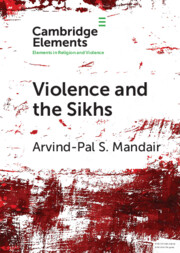Element contents
Violence and the Sikhs
Published online by Cambridge University Press: 22 March 2022
Summary
- Type
- Element
- Information
- Online ISBN: 9781108610353Publisher: Cambridge University PressPrint publication: 21 April 2022
References
- 8
- Cited by



